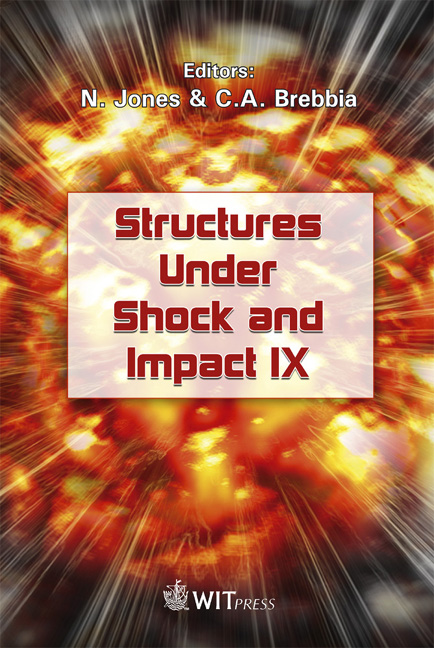Non-ideal Explosive Performance In A Building Structure
Price
Free (open access)
Transaction
Volume
87
Pages
10
Published
2006
Size
926 kb
Paper DOI
10.2495/SU060491
Copyright
WIT Press
Author(s)
K. Kim, W. Wilson, J. Colon, T. Kreitinger, C. Needham, R. Miller, J. Orphal, J. Rocco, J. Thomsen & L. V. Benningfield
Abstract
The performance of a non-ideal explosive has been investigated in a reinforced concrete 2-room test structure with two different window and door configurations: (1) without and (2) with doors and a window. Pressure records at different locations of the two-room test structure for the two different configurations have been compared with each other and 3D CFD numerical simulations. Reaction efficiencies of fuel gases and aluminum particles in the explosive detonation products, especially the aerobic reaction with air, as functions of time have been estimated for the two cases and then compared with each other. Keywords: non-ideal explosives, aluminum particles, aerobic reaction, anaerobic reaction, tests, CFD simulations, payload-structure interaction. 1 Introduction Generic non-ideal explosives are fuel-rich in detonation reactions. Much of the fuel, in the form of aluminum particles and some detonation products, will react with other detonation products during an anaerobic reaction phase in a fireball. However, typically there is some leftover fuel that has a potential to react further with the surrounding air (aerobic reaction) at a later time. If it does, in what timescale does it react? Does it add to the strength of blast waves inside a structure? Would it work if the structure is open to the outside (doors and widows are removed from their openings)? Inside the structure, how much blast enhancement can be obtained if the structure is marginally and temporarily
Keywords
non-ideal explosives, aluminum particles, aerobic reaction, anaerobic reaction, tests, CFD simulations, payload-structure interaction.





